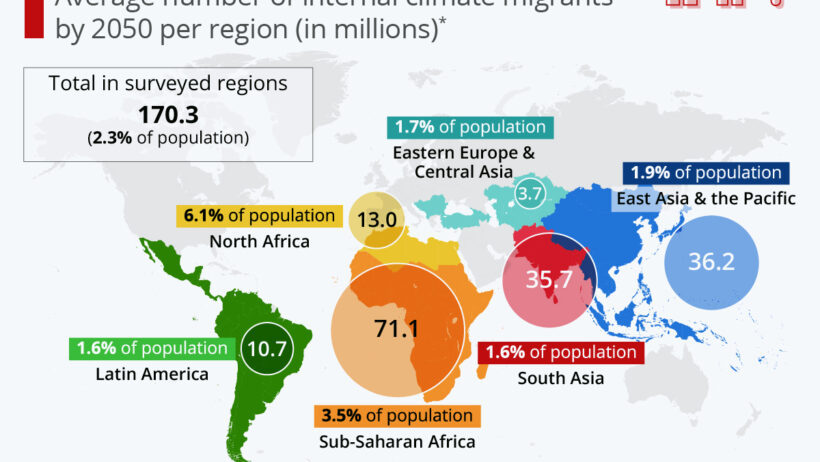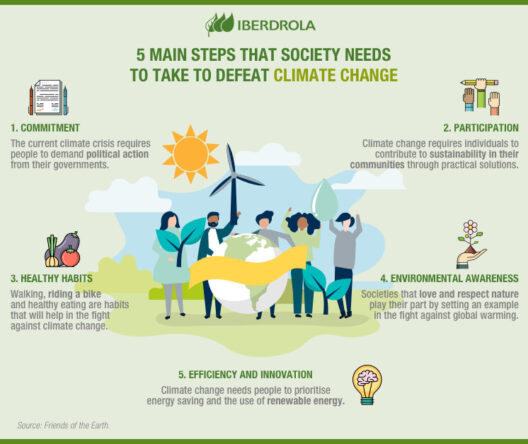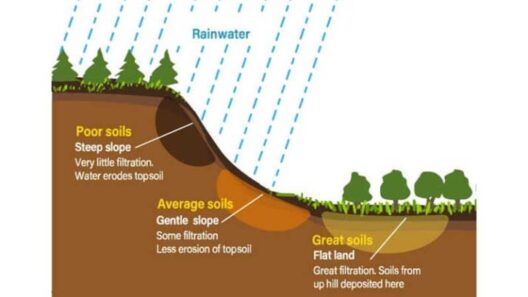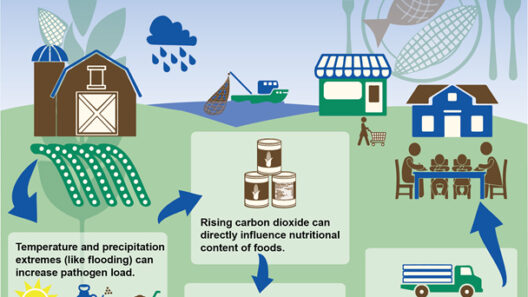Climate change is not a distant concern; it is a pressing reality reshaping our planet’s landscape and populace. As the Earth’s temperature rises due to anthropogenic activities, a perilous phenomenon is emerging: migration driven by climate-induced factors. How does a warming planet compel individuals to leave their homes, and what does this imply for global society?
The connection between global warming and migration is multifaceted and complex. Increased global temperatures precipitate extreme weather events, sea-level rise, and the deterioration of vital ecosystems. Vulnerable populations across the globe face existential threats as their environments become increasingly inhospitable. When traditional livelihoods are disrupted by climatic changes, the only recourse available often becomes migration.
To understand this issue, one must first delve into the causative factors of climate-induced migration. Extreme weather events, such as hurricanes, floods, and droughts, are on the rise. These calamities not only destroy homes but also disrupt agricultural practices, thus creating food shortages. Coastal communities are particularly vulnerable to rising sea levels, which threaten to inundate land and displace entire communities. As habitable land decreases, migration to urban areas or other countries often results, creating climate refugees.
Additionally, the subtleties of drought exacerbate water scarcity, which fuels competition for remaining resources. Regions such as sub-Saharan Africa, for example, have experienced increasingly erratic rainfall patterns, leading to devastating famine. Populations find themselves in dire circumstances, prompting migration as a survival strategy. How can one sustain life in a parched land? These questions elicit personal quandaries, forcing individuals to consider their survival options.
Moreover, it is critical to note that migration catalyzed by climate change is not a homogeneous experience. While urban migration is common, others may seek refuge in other countries or continents, leading to unique challenges. Host nations often grapple with the sudden influx of people, which can exacerbate existing socio-economic tensions. Consequently, this transition can create both a humanitarian crisis and a challenge to national resources and infrastructures.
Not only do climate refugees face physical displacement, but they also confront cultural dislocation. The act of migrating strips communities of their cultural identities and heritage. Returning may not be a feasible option, especially if their homeland becomes uninhabitable. This erasure of cultural identity constitutes an additional layer of conflict, as individuals strive to adapt to new societies while trying to preserve their traditional customs.
In the context of international policies, climate refugees do not fit squarely within existing legal frameworks. Unlike traditional refugees, who are defined by persecution based on race, religion, or political opinion, climate refugees face challenges that stem solely from environmental degradation. This raises pressing questions about the rights and protections entitled to individuals fleeing environmental crises. How do we reconcile legal definitions with the pressing humanitarian need to protect those displaced by climate change?
Moreover, the implications of climate-induced migration resonate on a global scale, inducing political, economic, and social ramifications. Countries receiving large numbers of climate refugees often experience strain on their resources, thereby leading to potential conflicts. In regions already struggling with poverty and instability, the sudden arrival of newcomers may exacerbate existing grievances, fueling social discord. Effective collaboration among nations will be necessary to mitigate these tensions, yet cooperation remains a significant hurdle given the nationalistic tendencies prevailing in global society.
As a response to these escalating challenges, it is vital to consider proactive measures. Increasing international cooperation could lead to better management of displacement caused by climate change. Creating legal recognitions for climate refugees within international law would enable enhanced protections and federal aid. Additionally, investing in climate resilience can mitigate displacement by helping communities adapt to changing environmental conditions. This may involve employing sustainable agricultural practices, developing infrastructure that can withstand extreme weather occurrences, and investing in renewable energy sources.
Education plays a poignant role in fostering awareness about the implications of climate change on migration. By equipping people with knowledge and solutions to combat environmental degradation, communities may reclaim their power, mitigating factors that drive them from their homes. Raising awareness on sustainability practices can create a ripple effect, initiating a broader societal shift toward better stewardship of the planet.
Ultimately, the phenomenon of climate-induced migration should not be viewed solely through the lens of crisis but also as a catalyst for change. As populations transition due to environmental motivations, societies have the opportunity to re-evaluate their approaches to sustainability and coexistence. The question remains: can humanity respond to this profound challenge with empathy and innovation, fostering a future where both people and the planet can thrive?
The pressing nature of climate change and its direct links to human migration challenge society to confront its responsibilities. Proactive actions must take center stage in conversations about the future, ensuring that nobody is left behind. The journey is fraught with complexities, yet it is a journey that must be undertaken with urgency and determination for a sustainable and equitable future.








